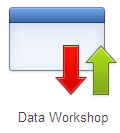Migrate your MS Access data to an Oracle database using the ETL Tool Talend
APEX is promoted as the perfect replacement for MS Access applications. One thing you should consider though is how you migrate your data to the Oracle database. In APEX there is a handy tool called the Data Workshop that can be used for this. You first export your Excel files from the MS Access database, and then follow the data upload wizard to import the data into identical tables. Since you are not always working with a 1-1 relationship, you will most likely have to write some PL/SQL to get all the data in the right tables.

The downside is that you will need to repeat this process when you go into production. This is not a big problem if you only have one table to migrate. But if you have multiple tables and/ or your users also want new data during tests and trainings, you will spend a lot of time exporting and importing Excel files.
A recent APEX project for a client required a large data migration from MS Access Databases to the Oracle database. Because we would require fresh data on several points in the development process we decided to use the ETL Open Source Tool Talend. We got impressed of how intuitive the tool is, it only took a few days before we were familiar with the tool. Once you get the hang of it, you can write (or should I say draw) migrations of tables in no time. We needed to migrate from an MS Access database but the tool supports a wide range of databases and documents to import your data from. In total we migrated around 30-40 tables to our Oracle database.
Let’s have a closer look at one of our migration jobs.

At the left we see our MS Access database. Each tAccessInput component will get data from one table. After that we join the tables in our tMap_1 component. The reason we don’t just write our joins in one component, is because this way we can really see how many rows every table returns.
On the bottom we have some Oracle Database input connections. They will join the persons of our MS Access Database with the persons in our Oracle Database based on the National registration number. After that we write our data to our Oracle Database. You may notice that we have two lines going to Excel files. This is our error logging; we use this to log the rows that did not find a match. In our first Excel for example we write persons that did not find a match in our Oracle Database.
This is just one example, in total about 20 jobs were built. During the development we also had to deal with certain calculations or convert data. For most things there was a component ready to use and if there wasn’t you could always write a Java expression in the tMap items.
I hope I convinced you of the benefits of using Talend as a migration tool for APEX projects, because we will certainly use this tool again!
